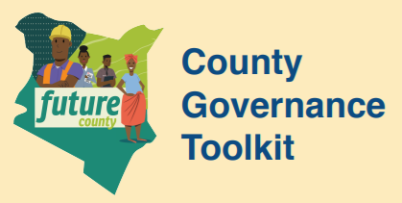Search
This page gives you direct access to all the resources – web pages and downloadable files – available in the County Governance Toolkit.
You can narrow the search results by typing keywords in the search field and/or by adding filters using the check boxes below to select the Type of Resources and Topic of your interest.
Capacity Development Institutions
Government Institutions While most national government ministries, state departments and agencies have the mandate to build capacity of county government, the following are institutions with specific core training mandate for county governments. Kenya School of Government (KSG) The Kenya School of Government (KSG) is a… read more
Toolkit PageNational Government
The Parliament consists of two houses: The National Assembly and The Senate as established under the Constitution of Kenya (COK) Article 93. The National Assembly The National Assembly together with the Senate constitute the Parliament as per the Constitution of Kenya (COK) 2010 Article 93. It has a total of 349 seats;… read more
Toolkit PageCounty Government
There are forty-seven County Governments in Kenya. They were created with the 2010 Constitution to enhance equity in resource distribution, bring decision making and service delivery closer to citizens and enable the realization of the right to self-determination. The County Government consists of two arms: the County Assembly… read more
Toolkit PageCivil Society
Citizens The Constitution of Kenya (2010) gives citizens the right to self-determination. This means that citizens have both the right and the obligation to participate in decisions that affect their lives. Citizens exercise this right by participating in national and county government decision making processes and getting… read more
Toolkit PageThe Judiciary
The constitution (COK, Chapter 10, Article 159) establishes the judiciary as the third state organ, along with the executive and legislature. The judiciary is independent and has full judiciary authority as vested in it by the people of Kenya according to the Constitution and other laws. The judiciary of Kenya consists of the… read more
Toolkit PagePolitical Representation and Intergovernmental Relations
According to the Constitution (Art. 1), citizens exercise their sovereignty through their elected representatives at the national and county level. At the national level, citizens vote to elect the President of the national executive, a member of the National Assembly representing their constituency (290 constituencies plus… read more
Toolkit PageCounty Revenues
Governments generally fund their expenditures through the revenues they collect from residents and additional sources of financing such as grants or loans – the latter primarily used to fund large development projects. County Governments in Kenya have two main types of revenues, the ones they collect directly from residents –… read more
Toolkit PageBasics of Devolution
Decentralisation happens when some of the decisions government makes around service delivery are moved from the center and brought closer to the communities it intends to serve. Devolution is the strongest form of decentralisation as it creates local governments that are elected by the citizens and make autonomous decisions on… read more
Toolkit PagePolicy Evaluation
Policy Evaluation (or Policy learning) examines how public policy has been implemented. It enables policy makers to learn about what worked or did not work, and what contributed to policy success or failure. Policy review builds on these evaluation results in order to inform decisions on whether and how such policy needs to… read more
Toolkit PageCIDP Review
The CIDP Review is a highly participatory stakeholder review that happens during political leadership transition between county administrations before or after elections. It forms an important part of the successor/forthcoming CIDP, and typically assesses results achieved against original or revised targets by sector, program… read more
Toolkit Page